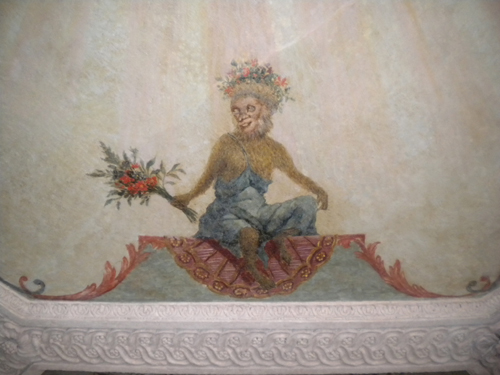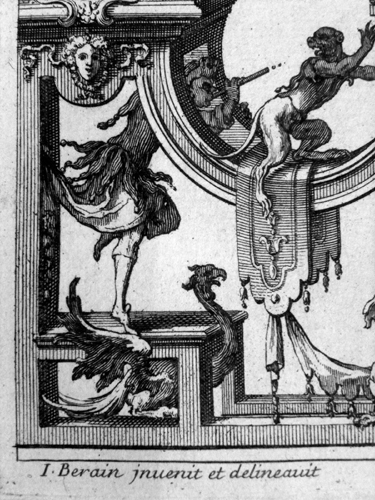
A wonderful surprise was had by the new owners of the oldest surviving house in St Martin’s Lane, near London’s Trafalgar Square. For when they began work on the panelled ceiling of the front room on the first floor it became clear that it contained painted representations of the four seasons. As the ceiling was carefully restored something altogether more interesting was revealed.

The idea of babouineries – representations of monkeys aping human occupations and sports – goes back to the decoration of medieval manuscripts, where they were occasionally used to symbolise the sin, vanity and weakness of mankind. However, the word singeries (from the French singe for ape or monkey) is usually associated with the French Rococo. The late 17th century French artist Jean Bérain promoted the lowly monkey to a higher status and portrayed him as a playful creature bedecked in elegant clothes with a talent for music, juggling and dancing. Bérain replaced the classical fauns and statues of Renaissance grotesques by figures of monkeys and his engraved designs were to prove very influential.

Claude Audran worked as a decorative painter for Louis XIV in his palaces at Versailles and Fontainebleau and in 1709 painted an arbour with monkeys seated at table for the Château de Marly.
One of the best known examples of singerie in England is the ceiling of the Monkey Room at Monkey Island Hotel, located on Monkey Island in Bray-on-Thames. This was painted by the French painter, Andien de Clermont, who arrived here in 1716. Another of his ceilings is in the ladies’ boudoir, at Langley Hall, in Loddon, Norfolk, which he painted prior to his return to France in 1755.
Slightly further afield – another well-known example is in the bathing pavilion (Badenburg) at Schloss Nymphenburg, in Munich, where monkeys are used to decorate the “Affenkabinett” or “monkey cabinet“, a richly decorated dressing room and study.

The ceiling in London has now been fully restored by a highly competent team from Cracow, Poland, and it is thought that it was executed in the 1730s-40s.
I was asked to advise on the decoration of the panelled interiors in this fascinating building. My company Papers and Paints produced paint in appropriate colours.
View Larger Map












No comments yet. Be the first!